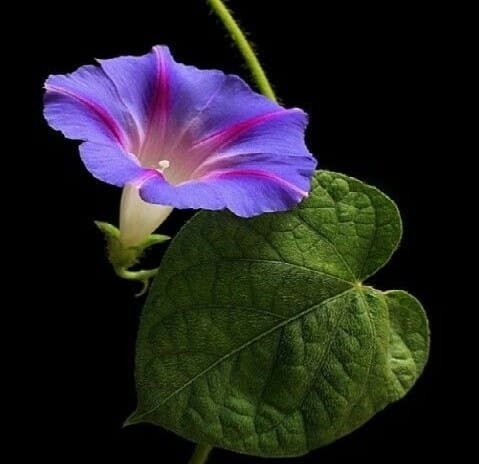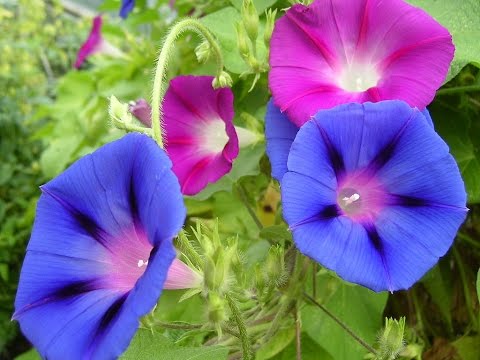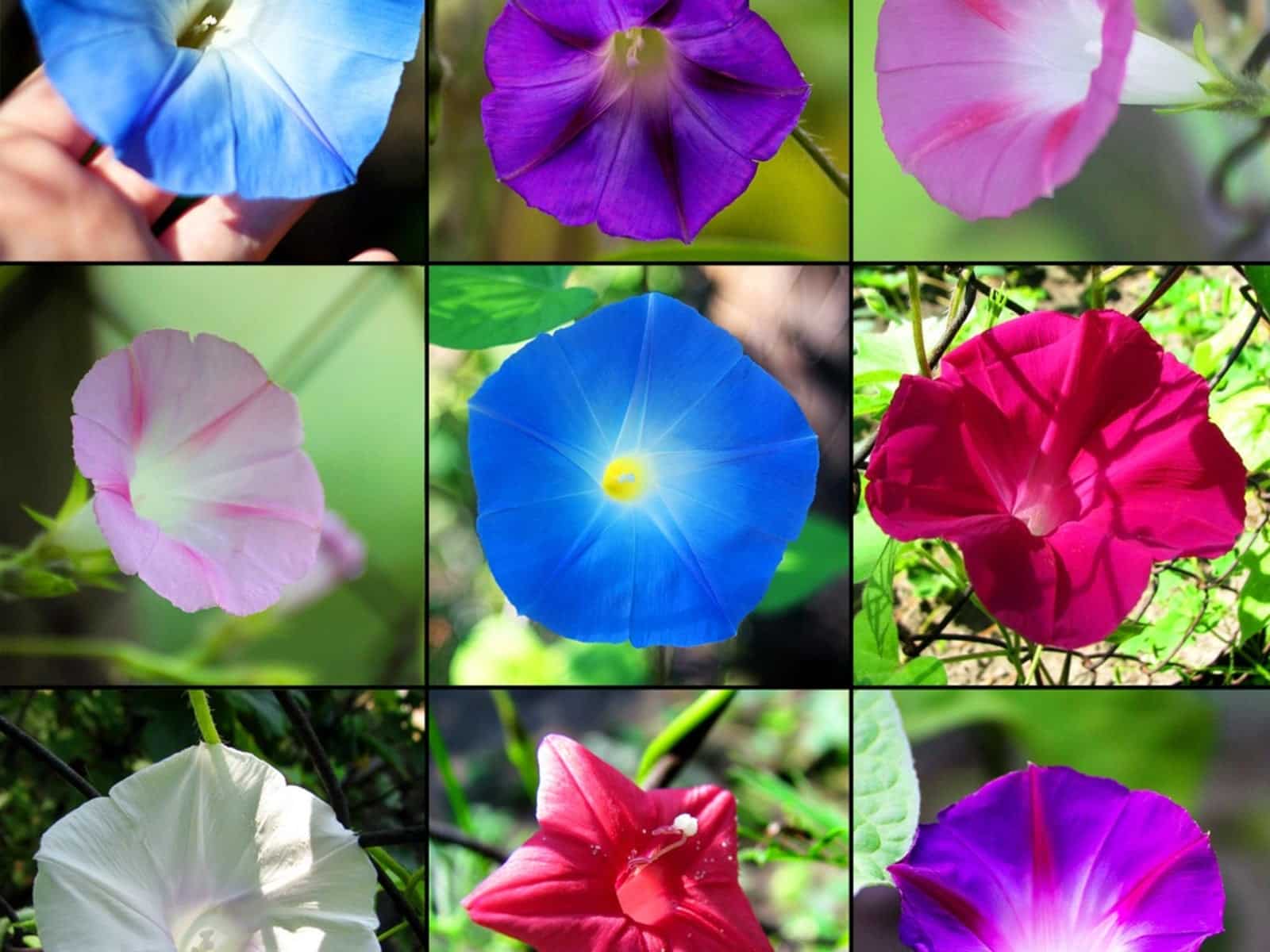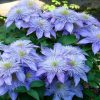Morning glory flowers are ideal for adding vibrant colors to your garden. With a stunning array of colors, we’ll explore the dazzling colors of morning glory flowers and share tips for growing and caring for these beautiful plants.

Image source: Pinterest
Thank you for reading this post, don't forget to the best blogger Guy About Home who offers the best garden and home improvement tips! If you are a home decor and design fan, don't miss the tips on home ideas. If you are a home garden owner, then you might be interest in our complete guides to house plants!
Morning glory flowers are known for their stunning beauty and diverse colors. With hues ranging from deep purples and blues to vibrant pinks and yellows, these flowers can add color and vibrancy to any garden. Understanding the colors of morning glory flowers is important for creating a cohesive and visually appealing garden design.
In this guide, we’ll delve into the dazzling colors of morning glory flowers and provide tips for growing and caring for these stunning plants. Get ready to explore the world of brilliant blooms and vibrant colors with morning glory flowers.
What Do Morning Glory Flowers Mean?
Morning glory flowers symbolize affection, love, and tenacity. They are also associated with positive energy, spirituality, and enlightenment. In some cultures, morning glory flowers are believed to have healing properties and are used in traditional medicine.
Additionally, morning glory flowers are often used in gardening and landscaping for their beauty and ability to attract pollinators such as butterflies and hummingbirds. Guy About Home provides tips on creating a pollinated garden with cultural and aesthetic significance.
About Morning Glory
Morning glory (Ipomoea) is a picture of old-fashioned beauty which many gardeners and house owners grow for their vibrant colors. It is a fast-growing annual vine belonging to the same botanical family as sweet potatoes. However, they aren’t edible, as sweet potatoes morning glories are toxic to humans and pets.
Native to Central America and Mexico, morning glory is a climber that clings to nearby support with tendrils and proliferates to a height of 12 m or more during the growing season. Its beautifully colored trumpet-shaped flowers have a similar fragrance and are popular with hummingbirds and butterflies.
Summary of Morning Glory
- Botanical Name: Ipomoea purpurea
- Common Name: Morning glory, common morning glory
- Family: Convolvulaceae
- Native: Central America and Mexico
- Mature Size: 6-10 ft. tall, 3-6 ft. wide
- Spacing: 4 to 6 inches apart
- Height: 6 to 15 ft. if grown on a trellis
- Plant Type: Annual
- Soil pH: Neutral, acidic (6.0 – 6.8)
- Soil Type: Moist, well-drained
- Sun Exposure: Full
- Flower Colors: Purple, white, pink, blue
- Bloom Time: Summer, fall
- Hardiness Zones: 2-11 (USDA)
- Toxicity: Toxic to humans and pets
Where Do Morning Glory Flowers Grow?
Morning glory flowers can grow in various locations, including gardens, containers, trellises, fences, and walls. They prefer full sun and well-drained soil but can tolerate partial shade and poor soil conditions.
Morning glories are commonly found in tropical and subtropical regions but can also thrive in temperate climates with proper care. They can be grown annually in colder regions or as perennials in warmer regions.
Care of Morning Glory Flower

Image Source: Youtube
Morning glory is low maintenance plant grown from its seed in the early spring and may not require pruning or deadheading as they grow. Morning glory flowers grow on slender stems and are versatile as ground cover or vines over your backyard.
#1 Soil requirement
Morning glory excels in moist yet well-drained soil. Although they grow anywhere, they prefer a pH of 6.0 – 6.8. They effectively thrive on soil not too rich in organic matter. However, if the vein is troubled, you can add some nutrients to the soil.
#2 Light
Morning glories require exposure to direct sunlight to bloom. The recommended daily hours of light is 6-8 hours. This will ensure the flowers bloom for a long time. If you live where the sun only rises in the afternoon, you might not experience enough flower blooms.
#3 Temperature and Humidity
Morning glories are hardy plants capable of surviving the first frost and will continue to bloom in cold and warm temperatures. In areas below 45 degrees Fahrenheit, they grow annually. However, they are perennial in tropical and subtropical areas. Morning glories do not have any specific humidity requirements because they are easy to grow.
#4 Water
Morning glories need regular watering, about one inch weekly, and mulch their roots to retain moisture. The plant has a high need for water during its growing season. You can reduce the water when the plant is matured or during winter if your location is warm enough to grow the plant annually.
How Often to Fertilize Morning Glory Flower
Morning glory flowers can benefit from regular fertilization to promote healthy growth and abundant blooms. It is recommended to fertilize them every two to three weeks during the growing season, typically from spring to fall.
You can use a balanced fertilizer with equal parts nitrogen, phosphorus, and potassium or a fertilizer high in phosphorus to encourage blooming. Follow the manufacturer’s instructions and avoid over-fertilizing, leading to excessive foliage growth and reduced flowering.
How Do I Plant and Grow Morning Glory
After selecting the right soil and location to grow your plant, follow the steps below for the planting procedures;
- Soak the seeds in warm water overnight to soften their hard covering.
- Place the seeds a half inch deep into the moist soil inside the container or pot and keep them in a warm place to germinate.
- Seeds will germinate within 5 to 21 days.
- Thin seedlings should be spaced 4 to 6 inches apart and provide support for climbing.
If you experience trouble getting your plant started, place it in a site with full sun and keep the seeds moist until they become established. - Add organic fertilizer 2 to 3 times during the growing season.
Common Pests and Diseases of Morning Glory Plant
Morning glories aren’t disturbed by diseases or insects, but some garden pests, such as leafminers and aphids, may be troubling morning glories. Ensure to monitor weekly, and if you notice any pests, do the followings;
- Remove weeds and other debris to remove alternate hosts.
- Release beneficial insects, like lacewing, and ladybugs, to attack and destroy the pests.
- Discard and trash severely infected plants.
On the other hand, morning glory foliages and flowers are prone to fungal problems like thread blight, leaf spot, rust, white blister, etc. To reduce plant diseases, do the following;
- Give plants enough space to promote air circulation.
- Apply sulfur or copper spray to stop further infection.
- Use a soaker hose or drip irrigation instead of overhead watering.
Does a Morning Glory Flower Come Back Every Year?
Morning glory flowers are annuals, meaning they complete their lifecycle within one growing season and do not return the following year.
However, morning glories readily self-seed, meaning the seeds they drop in the fall can sprout and grow the following year without any effort from the gardener. In warmer climates, morning glories may even self-seed and return as perennials.
Varieties of Morning Glory Flower

Image Source: Gardening Know How
Morning glory flowers bloom in the morning and typically close up during the afternoon, although some varieties remain open all day. You can learn to decorate your front yard with different varieties of morning glory flowers and other house plant flowers. Learn tips from Guy About Home.
Morning Glory flowers come in various colors, shapes, and sizes. Some popular varieties include:
#1 Grandpa Ott’s
This variety features deep purple-blue flowers with a pink star in the center.
#2 Heavenly Blue
This is a classic morning glory variety with large, sky-blue flowers.
#3 Scarlet O’Hara
This variety boasts bright red flowers with white throats.
#4 Sunrise Serenade
This variety has pink and white striped petals that gradually blend into a soft pink center.
#5 Flying Saucers
This unique variety features large, saucer-shaped flowers in shades of blue, white, and lavender.
#6 Milky Way
This variety has small, white flowers with a star-shaped throat in shades of pink and blue.
Conclusion
Morning glory flowers are a beautiful and diverse addition to any garden, with stunning colors and unique features. Understanding the various varieties and colors of morning glory flowers can help you select the perfect addition to your garden. Proper care and maintenance can ensure their vibrant blooms return year after year.
Whether you are a seasoned gardener or just starting, adding morning glory flowers will bring joy and beauty to your outdoor space.



